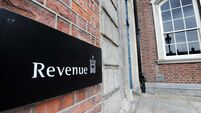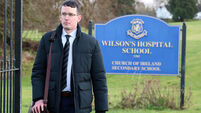‘Unborn’ refers to child within the womb, rules court
The judges did stress, though, that in this case they were not addressing issues as to when human life begins.
Ms Justice Susan Denham said Article 40.3.3 referred to a situation where two lives are connected and a balance may have to be sought between them. No such physical connection existed between Ms Roche and the frozen embryos and the capacity to be born arises after implantation, she said.
On that basis, and also because of its finding of no enforceable contract between Mary Roche and her husband Thomas for implantation of the frozen embryos, the court ruled Ms Roche is not entitled to an order for implantation of the embryos, stored in the SIMS fertility clinic in Rathgar, Dublin, since 2002.
It adjourned costs and other issues to early next year. It is believed the embryos will remain in storage for the forseeable future.
The Chief Justice, Mr Justice John Murray, said Article 40.3.3 was intended to protect human life before birth and was inserted against a background where its advocates, given changes in US and British law, feared the Irish courts might decide a pregnant woman had a constitutional right to abortion.
Article 40.3.3 was intended to embrace human life before birth and to extend to it, in express positive terms, the constitutional protections available to life after birth. A prohibition on abortion could have been chosen instead.
The moral status of the embryos and the respect and protection society may feel they are owed was a different issue to that which the court had to consider — whether the frozen embryos were human life within the meaning of Article 40.3.3.
Given uncertainty and lack of consensus as to when human life begins, the point in law as to when protection for life before birth should be deemed to commence was a policy choice for the Oireachtas and not a justiciable issue for the courts, he said.
Ms Roche had failed to establish the frozen embryos constitute life of the unborn within the meaning of Article 40.3.3.
The chief justice added he could not accept, simply because an embryo exists outside the womb, it cannot be protected under Article 40.3.3. If, “and I accept this is a very important if”, the frozen embryos were considered to have the qualities of human life, they would “inevitably” attract constitutional protection, he said.
The embryos were created after fertility treatment undertaken by Ms Roche, now aged 43, and her husband in early 2002. The couple had one child in 1997 conceived naturally while a second was born in October 2002 as a result of the treatment. They separated around that time.
Ms Roche claimed human life begins from conception and she was entitled to have the remaining embryos implanted because of consents signed by Mr Roche relating to the fertility treatment and the protection for the unborn in Article 40.3.3. She also indicated she would have regarded Mr Roche as the father of any child or children born as a consequence of the spare embryos being implanted, with the consequent financial and other responsibilities.
Ms Justice Denham ruled the forms provided by the clinic to the couple were to obtain their consent to medical procedures, did not establish any contractual relationship between them and there was no agreement, express or implied, as to the use of the surplus embryos.
Mr Justice Adrian Hardiman said it was clear from the Irish and English language versions of Article 40.3.3. and the relevant legal authorities, the unborn or “na mbeo gan breith” was the embryo implanted in the mother’s womb and the temporal scope of Article 40.3.3. was the period of a pregnancy when the unborn life has been implanted in the mother’s womb.
Mr Justice Hugh Geoghegan said he did not believe the 1983 amendment was either drafted or voted upon with IVF treatment in mind but was to prevent the decriminalisation of abortion without the approval of the people as a whole.











